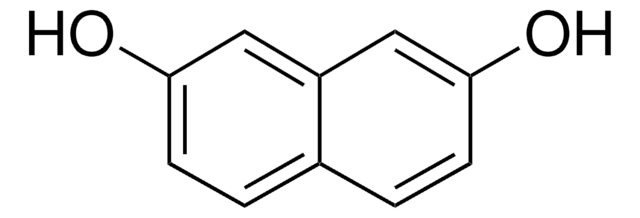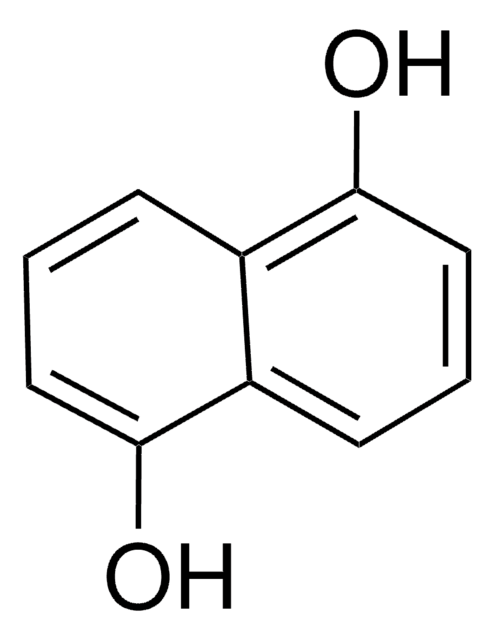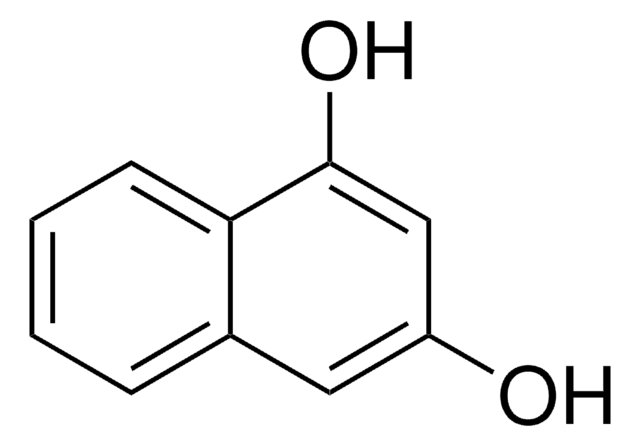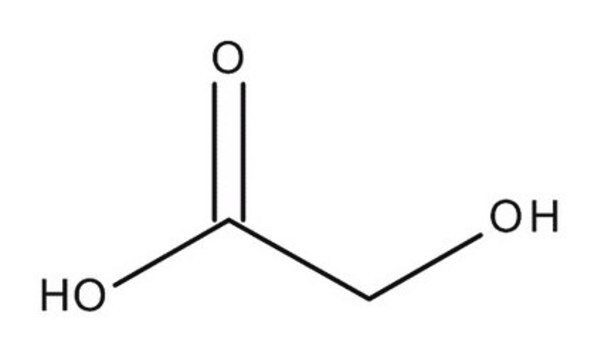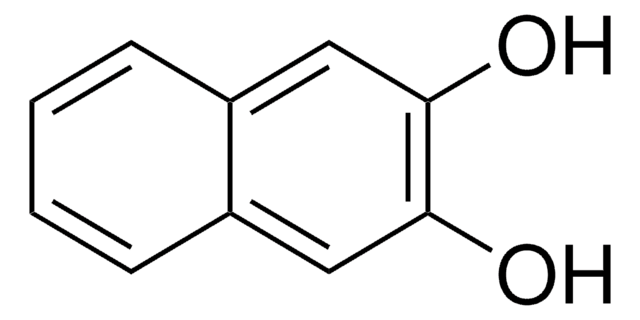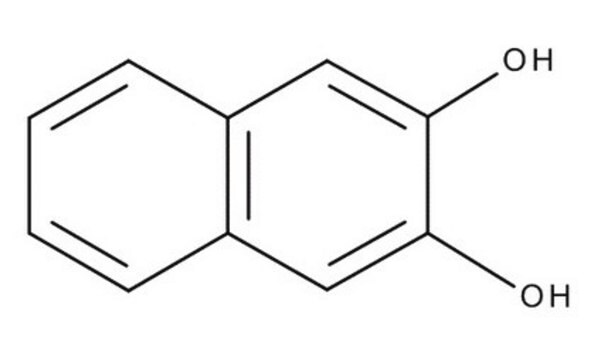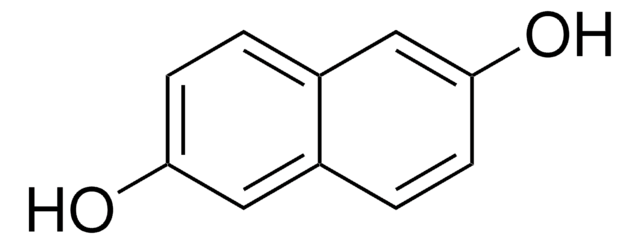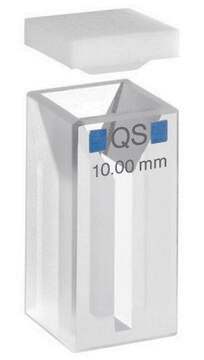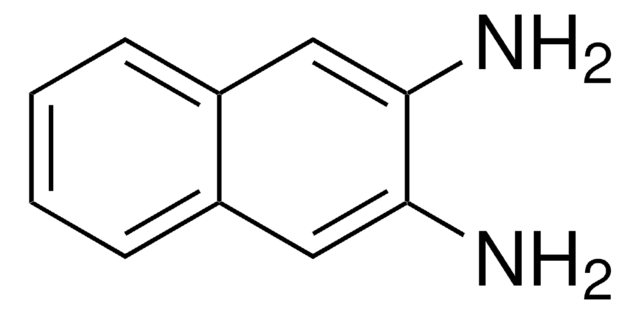8.20851
2,7-Naphthalenediol
for synthesis
Synonim(y):
2,7-Naphthalenediol, 2,7-Dihydroxynaphthalene
About This Item
Polecane produkty
Poziom jakości
Próba
≥98.0% (HPLC)
Postać
powder
mp
184-187 °C
gęstość nasypowa
600‑700 kg/m3
temp. przechowywania
2-30°C
InChI
1S/C10H8O2/c11-9-3-1-7-2-4-10(12)6-8(7)5-9/h1-6,11-12H
Klucz InChI
DFQICHCWIIJABH-UHFFFAOYSA-N
Zastosowanie
- Photoelectric Properties of Carbon Quantum Dots: Investigates the synthesis and high fluorescent quantum yield of green carbon quantum dots, where 2,7-naphthalenediol serves as a precursor, enhancing the photoelectric properties for potential applications in optoelectronic devices (Zheng et al., 2020).
- Fungal Melanogenesis Mimicry for Coatings: Describes the use of dihydroxynaphthalene, derived from 2,7-naphthalenediol, in creating multifunctional coatings that mimic fungal melanogenesis, showcasing its application in protecting materials and increasing their durability (Jeon et al., 2016).
- Catalytic and SERS Activities of Nanoclusters: Discusses the role of 2,7-naphthalenediol in enhancing the catalytic and Surface-Enhanced Raman Scattering (SERS) activities of osmium nanoclusters, which are crucial for chemical sensing and catalytic applications (Ede et al., 2014).
- Shape-Selective Pt Nanoparticles: Details the photoinduced formation of shape-selective platinum nanoparticles, where 2,7-naphthalenediol could potentially act as a reducing agent, influencing the synthesis process in photoreactive nanomaterial production (Kundu and Liang, 2010).
- Glycolate Testing in Microbial Cells: Presents a new rapid glycolate testing method using diethyl ether extraction suitable for small bacterial cell samples. While primarily a methodological study, it highlights the broader potential applications of reagents like 2,7-naphthalenediol in biochemical testing (Uchida et al., 1999).
Komentarz do analizy
Identity (IR): passes test
Hasło ostrzegawcze
Warning
Zwroty wskazujące rodzaj zagrożenia
Zwroty wskazujące środki ostrożności
Klasyfikacja zagrożeń
Eye Irrit. 2 - Skin Irrit. 2 - STOT SE 3
Organy docelowe
Respiratory system
Kod klasy składowania
11 - Combustible Solids
Klasa zagrożenia wodnego (WGK)
WGK 2
Temperatura zapłonu (°F)
Not applicable
Temperatura zapłonu (°C)
Not applicable
Certyfikaty analizy (CoA)
Poszukaj Certyfikaty analizy (CoA), wpisując numer partii/serii produktów. Numery serii i partii można znaleźć na etykiecie produktu po słowach „seria” lub „partia”.
Masz już ten produkt?
Dokumenty związane z niedawno zakupionymi produktami zostały zamieszczone w Bibliotece dokumentów.
Klienci oglądali również te produkty
Nasz zespół naukowców ma doświadczenie we wszystkich obszarach badań, w tym w naukach przyrodniczych, materiałoznawstwie, syntezie chemicznej, chromatografii, analityce i wielu innych dziedzinach.
Skontaktuj się z zespołem ds. pomocy technicznej